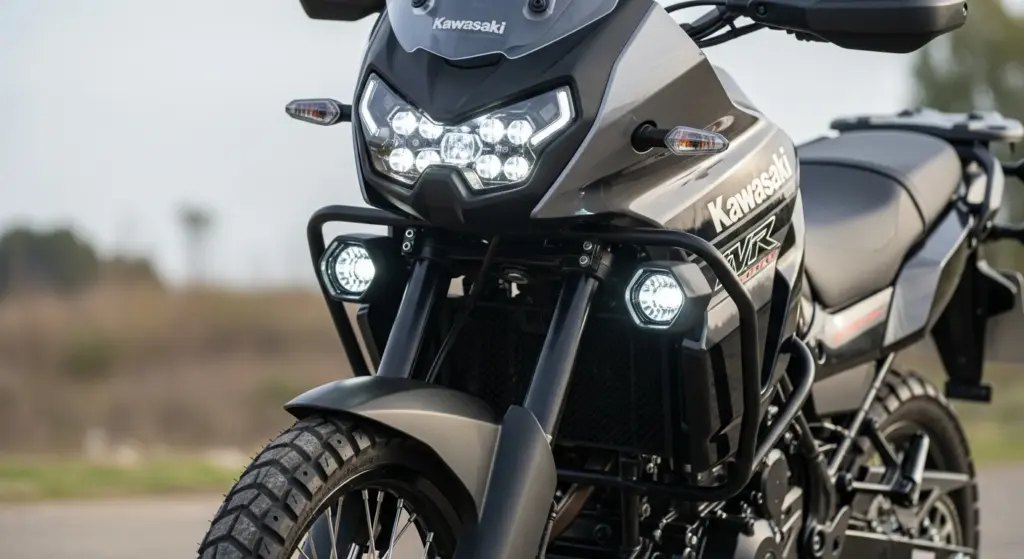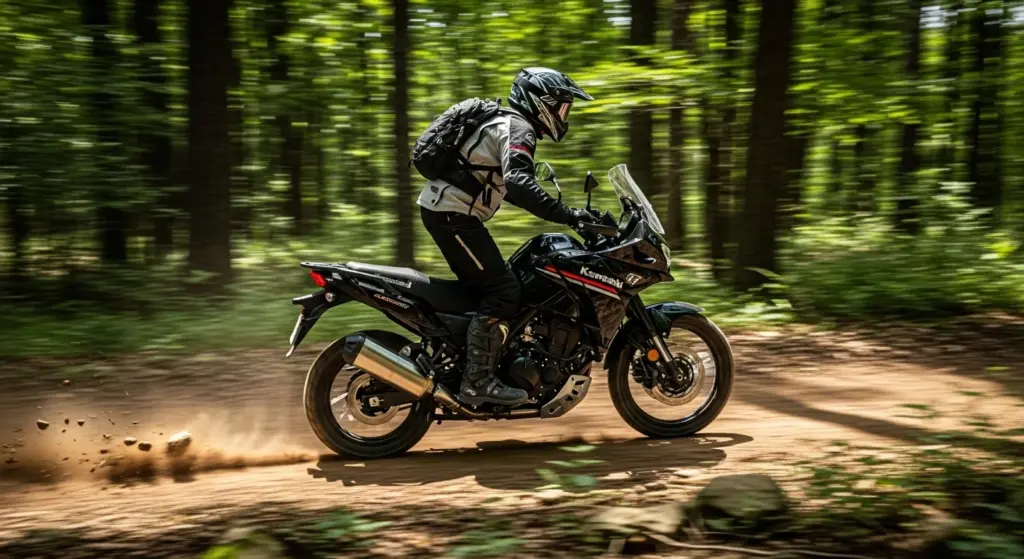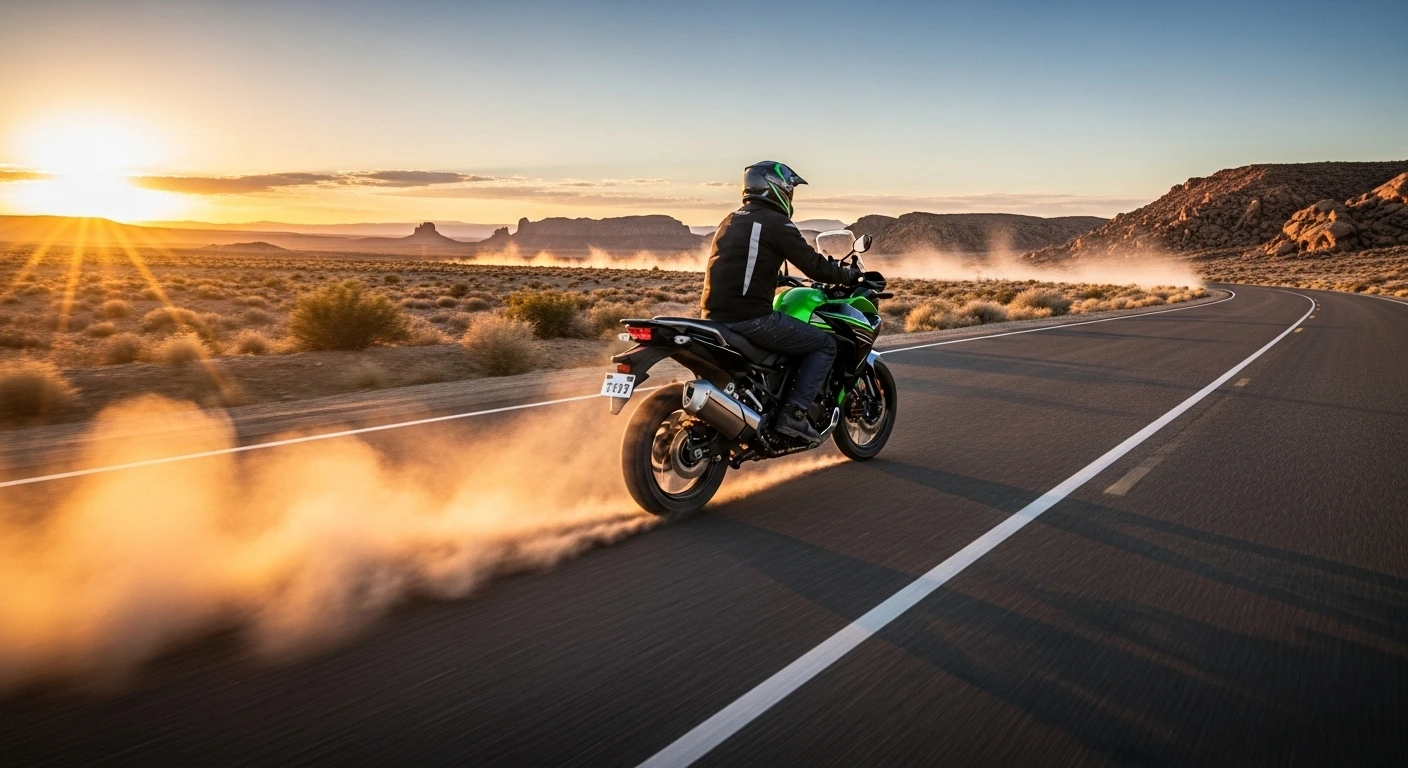Riders in the U.S. have long waited for Kawasaki to more aggressively enter the mid-size dual-sport/adventure space. Now, Kawasaki has officially teased a new KLE adventure bike, reviving the KLE nameplate after nearly two decades. This hints at a strategic pivot: offering more accessible adventure bikes without stepping into heavy, high-cost territory.
This matters because the adventure segment continues to boom in the U.S., especially among riders who want weekend versatility rather than heavyweight touring rigs. With rising fuel costs, off-road appeal, and a surge in smaller displacement adventures, Kawasaki’s move could meet growing demand for bikes that handle both pavement and backroads.
Let’s dig into what Kawasaki has revealed, what we can reasonably expect, how it stacks up, and what U.S. riders should watch for as the KLE 500 draws near.
Teasers, Clues & What Kawasaki Is Saying
Kawasaki has ramped up its teaser campaign under the slogan “Life’s a Rally. Ride it.” A newly dropped video shows a bike kicking up dust, with spoked wheels and rally imagery in rugged terrain. The teaser also reiterates the KLE branding and plays up off-road readiness.
Earlier, Kawasaki displayed a 21-inch spoked wheel and off-road tyre sticking out of a box at events, suggesting the new bike will take cues from classic rally geometry. Industry sources increasingly expect a KLE 500 model built on the same 451cc parallel-twin platform used by Kawasaki’s Ninja 500 and Eliminator lines.
Visordown reports that the KLE 500 may deliver around 45 bhp and 31.4 lb-ft of torque — numbers familiar to existing mid-tier Kawasaki twins. Kawasaki insiders and journalists expect the full reveal at EICMA 2025 (November), with sales rollout to follow.
While official specs are yet to drop, these clues help set expectations and frame comparisons.
Expected Specs & Real-World Implications

Here’s a projected spec sheet for the Kawasaki KLE 500:
| Component | Estimated / Rumored Value | Real-World Impact |
|---|---|---|
| Engine | 451cc liquid-cooled parallel twin | Balanced power for road & mild off-road |
| Power / Torque | ~45 bhp / ~31-33 lb-ft | Enough punch for highway cruising and trails |
| Transmission | 6-speed, likely chain final drive | Familiar, serviceable for riders & mechanics |
| Front Wheel | 21″ spoked | Better control on gravel and rough roads |
| Suspension | Upside-down front fork, adjustable rear shock | Tuning flexibility for varied terrain |
| Brakes | Single front disc or twin (TBD), ABS | Emphasis on safety with moderate capability |
| Electronics | Ride-by-wire, ABS, possible ride modes | Basic but modern electronics expected |
| Weight | Likely 430–480 lbs (wet) | Manageable for trail use and everyday riding |
Real-World Impact:
- On mixed roads or adventure routes, a 45 bhp twin keeps you comfortable at 70+ mph while offering enough flexibility for twisty climbs.
- The 21″ front wheel and rally geometry suggest better behavior off-road than many street-focused ADV bikes.
- Weight will be critical — keeping it sub-500 lbs will make the bike appealing to mid-weight adventurers.
- Simpler electronics may help reliability, and ABS will manage safety without overcomplicating the package.
Positioning & Competitive Landscape
Compared to Kawasaki’s Existing Lineup
Kawasaki currently doesn’t have a modern “rally-style” dual-sport in many markets. Its Versys 650 (also known historically via the KLE name in some markets) leans more toward road touring than true dirt readiness. The new KLE 500 would offer a firmer stake in the off-road/ADVenturer space without overlapping too heavily with Versys or heavier models.
Against Rival Bikes
In the mid-size adventure class, the KLE 500 will compete with bikes like Royal Enfield Himalayan 450, Honda NX500, and European offerings. If Kawasaki prices it right, the KLE could undercut some rivals while offering more power and better off-road geometry.
If the leaked numbers hold, it would beat some rivals on highway potential while still retaining trail-worthy features — a strong value proposition for U.S. buyers who want one bike that does many tasks.
Risks, Unknowns & Key Watchpoints

Market & Pricing Strategy
Kawasaki must balance cost vs capability. Too many cost cuts could alienate adventurers; too much spec could push the price too high. Especially for U.S. markets, import or tariff costs may affect final pricing.
Parts, Dealer Support & Localization
Adventure bikes demand durability and service availability. Kawasaki must ensure parts, spares, and support, especially in remote regions, or risk consumer hesitation.
Validation & Real Testing
Teaser videos and spec leaks are one thing — real riding impressions can highlight limitations (suspension, heat, ergos) that marketing never shows. Early press reviews will matter.
Official Reveal Timing
With EICMA 2025 anticipated as the stage for full unveiling, any delays or last-minute changes could dampen excitement. Also watch for U.S. homologation or market-specific changes.

